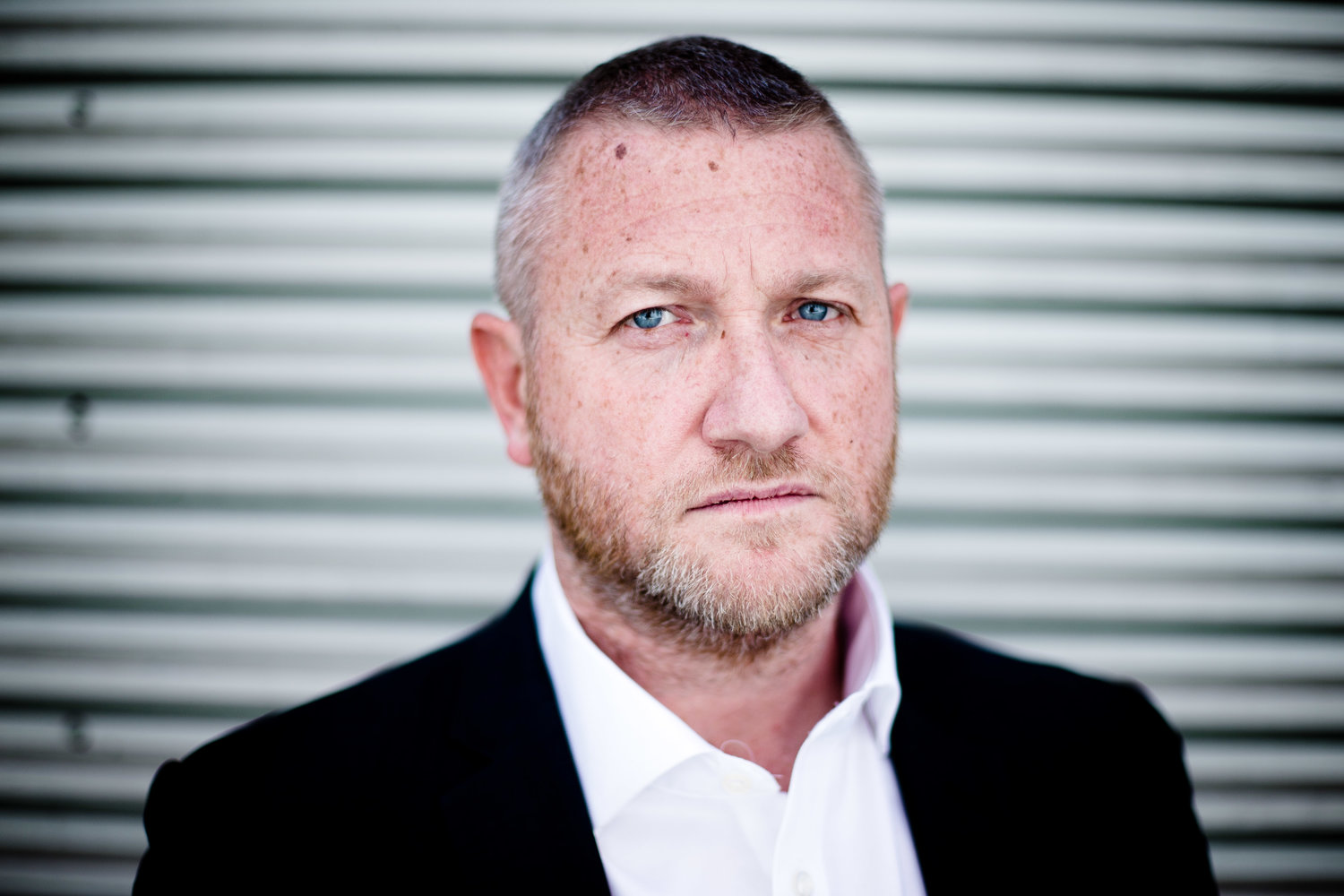Fake news sells better than real news
We've all heard a lot about fake news during 2017. In fact, you’d be forgiven for thinking that it has never happened before, such is the hype surrounding it.
Paradoxically, the reality is very different. Fake news has been going on, well, since man began telling stories…
The Turin Shroud is believed by some to be the burial shroud of Jesus Christ, yet three radiocarbon dating tests in 1988, showed that the cloth was made no earlier than the Middle Ages. You can imagine, if a cloth in which Jesus had been wrapped had been ‘found’ bearing his image following crucifixion, it would have been the lead story on the ten o'clock news, (if there had been such a thing back in those days).
In the town of Bayeux, northern France, you can see what is arguably another one of the world's oldest pieces of fake news - The Bayeux Tapestry. The victor's view of the Norman conquest of England is believed to have been commissioned by Bishop Odo, William the Conqueror's half-brother, shortly after his victory. It was finished in 1077, ten years after it was begun.
Experts now say it was an embroidery not a tapestry, I’m not here to argue about that, but before we even get started you can see there's controversy.
Nearly one thousand years old, it depicts a sequence of scenes telling the story of the events which led up to the Norman invasion of England in 1066 by William the Conqueror, and his defeat of the British ruler, Harold Godwinson, at the battle of Hastings.
George Wingfield Digby wrote of the tapestry in his book, Technique and Production:
“It was designed to tell a story to a largely illiterate public; it is like a strip cartoon, racy, emphatic, colourful, with a good deal of blood and thunder and some ribaldry.”
The historical accounts of what happened at Hastings, the day Harold died, are mostly taken from the tapestry. We all know the story don’t we? Harold looked up, got shot with an arrow penetrating his eye. Odd how this was, in those days, a fate said to be the appropriate one for people who break a sworn oath? Did Harold really get shot in the eye? Or was he trampled by some French horses and chopped to pieces?
Giant batmen on the moon
More recently, in 1835, the New York Sun ran a story about John Herschel, an eminent British astronomer. A series of news articles said he had spotted giant man-bats, blue goat-like creatures, and beavers that walked on two legs and could build fires - all seen on the moon. The newspaper even ran an artists' impression of the findings. Herschel was a well-respected scientist with one of the world's most powerful telescopes in an observatory in South Africa. It must have been true, mustn't it?
Then in 1993, less than five months after Bill Clinton had been sworn in as President of the United States of America, the Weekly World News had what I would describe as the most sensational story ever, about the then first lady, Hillary Clinton.
It ran the news that she had adopted an alien baby, and even had an 'official photo' on its front page. Just as intriguing, was the spin-off story about the Secret Service who were apparently building a special nursery for the alien baby inside the walls of the White House.
In the last few years, mysteries surrounding plane crashes have been closely covered. On 8 March 2014 while flying from Kuala Lumpur to Beijing - flight MH370 went missing, without a trace.
The mystery was finally solved, just six days later, by the Sunday Sport, which had photographs of the airliner on the moon. Hard to believe, I know. But it wasn’t the first time that the Sport had done this, they were experts at finding airplanes on the moon. In 1988 they’d found a missing World War II bomber there, which made history at the time, though it vanished without a trace a few days later, deepening the mystery.
The concept of fake news is far from new and far from unique
What has been the purpose of fake news up until now?
Well, put simply, it's to sell things to people who like the incredible, improbable or the amazing and to create revenue for those selling it. To monetise the fake stories.
Experts have dated the Turin Shroud back to between 1260 and 1390, which is wholly consistent with the shroud's first known exhibition in France in 1357. Later on in its history, it was even exchanged by a widow who in 1453, had it in her possession following her husband’s death. She used it to pay for a castle in France.
In 1543, John Calvin, the influential French theologian, pastor and reformer, wrote:
“How is it possible that those sacred historians, who carefully related all the miracles that took place at Christ’s death, should have omitted to mention one so remarkable as the likeness of the body of our Lord remaining on its wrapping sheet?”
He reasoned that either St. John was a liar, or else anyone who promotes such a shroud is convicted of 'falsehood and deceit’.
Since the beginning of the 19th century, the shroud has appeared in no less than ten exhibitions. A whole industry has sprung up around displaying, debunking or verifying it. Today Shroud of Turin centres and organisations exist all over the world.
Returning to the Bayeux Tapestry for a moment, William the conqueror's half-brother, Bishop Odo, the one who commissioned it, apparently also commissioned the cathedral it was to adorn. Cathedral chapters financed construction projects by actively raising money from congregations. One of the methods they used was to put items on display or arrange for relics to go on tour - items that could draw a huge crowd and raise large sums of cash, exactly like his 'comic book' tapestry.
The New York Sun newspaper editor who ran the story about batmen on the moon, well, he just made it all up. It's believed that his paper’s circulation more than doubled. It overtook The Times of London to become the best selling daily newspaper in the world at the time of the story.
Supermarket tabloid newspapers such as the one that broke the Hillary alien baby story, were all the rage during the eighties and nineties in the USA. They sold millions of copies.
In the UK, the Sunday Sport was so successful when it was launched in 1986, just before they found the first airliner on the moon, that it turned into a daily newspaper. By 2005 it was selling 190,000 copies a day.
So we like fake news? We have always liked fake news? What happened in 2016 and 2017 then?
Well, here it is - the Russians got involved.
Yep. And worse than that. They started paying for advertising space in their dreaded roubles (or rubles if you're an American English speaker) on things like Facebook and Twitter to try and get you to click on their posts.
And here’s the bombshell you weren’t expecting - It was just like before, like all the fake news in history. Different stories benefited different sides of the political spectrum, because really it was just about making money.
Monetising fake news.
How does today's fake news make money?
Clickbait. A salacious headline like many of the ones we see about Hillary or Trump of late are just made up. They are bait to hook you in. And this technique is perpetrated by people in countries all over the world - from Abania to Zimbabwe.
As this piece in the Guardian explains:
“Often the spammers begin by setting up their own “fan pages” and attract human users to ‘like’ them on Facebook. Once they have enough likes on the page, they can begin selling links on it to third parties”
But it doesn't always stop there. Once they get enough 'likes', there may even be the opportunity to sell the Facebook page on, as a going concern in itself.
Sometimes the headlines are designed to drag you to the fake news website where the fake news story is held. On the fake news site there is advertising. The more website traffic they get, the more money they make from advertisers and via affiliate deals.
And here's the rub, every Facebook trickster in the world is chucking their money at the US right now. And yes, even the Russians are chucking their roubles at the United States and creating fake US posts. Why? Because an American reader is worth three to four times as much to an advertiser than any other reader on earth.
Fake news sites are peppered with fake news stories that are US-centric especially to attract US readers.
The best way to get you to click? Use the correct words in your headline, as an eighteen-year-old Macedonian clickbait entrepreneur earning thousands, says in this article:
“The most-read news articles are usually the ones containing the click-bait words... ‘Oh my god, breaking news, wow,’ and usually something that has never been aired before. Because if the title just says, ‘Today this happened, today that happened,’ no one will open that.”
Some of the information in the posts appears to have been re-purposed from existing websites, including many in the US.
Besides politics, 'health stories' with fake homemade cures for serious illnesses, weight-loss tips and anti-ageing miracles are also popular ways to reel readers in.
Sarah Thompson is an expert in tracking down and documenting click-bait and runs the 'Exploiting the Niche' Facebook page. She is quoted in an article by BuzzFeed news as listing the growth areas for fake Facebook pages and clickbait themes:
“The US military and veterans are popular themes, as well as police and police dogs. Anything with animals, animal abuse, wild animals, beautiful nature, flowers, Native Americans, Christianity...Really it could be anything. Any subject I have looked into, I have found the corrupt pockets where that community is being exploited.”
Copycatted native American pages are being run by people in Kosovo and Vietnam, and scam artists traced to Georgia, are even making money from fake news aimed at Britsh and Canadian readers about hoax terror attacks in their home countries.
Content is also borrowed from the mainstream media and other existing news and campaign organisations. Sometimes the stories will be posted with the addition of invented details; sometimes they just will just have a fascinating or downright untrue headline added.
Polls, rallies or protest events are also popular ways to get Facebook clicks, direct someone to a website or even harness user data.
Some posts about Hillary Clinton have been a hit with curious Facebookers, although apparently, only the negative ones get the amount of click traffic needed to make significant money. It appears the main things we all want to read about are mess ups, controversy and bad fortune.
According to some clickbait spammers, in the run-up to the elections, Bernie Sanders-related content didn’t perform well at all. Nobody was interested in large enough volumes to click. Though there is some ‘Buff Bernie’ colouring book advertising out there, this advert paid for in Russian roubles apparently only received around 54 clicks.
Many of the controversial political posts appear to be events. If you click ‘going’ on an event on Facebook - the event organiser can harness data from you, such as your birth date and phone number, send you surveys about pensions, direct you to their websites, and generally sell you all manner of other goods and services.
In very extreme and rare cases, unscrupulous Facebook accounts may even sell on the personal information they might obtain when you agree to attend an event, for others to attempt to hack into your accounts - or get you to click onto a dodgy link which may contain a virus.
But is the initial act of spreading the fake news actually a crime?
If it were a crime, then none of those supermarket tabloid newspapers in the US would ever have existed, the Sunday Sport would be banned and the Turin Shroud would be a laughing stock, rather than something still debated over and venerated by many to this very day.
Do the people who are running these Facebook pages all over the world, and asking for 'likes' really care about politics or are they just selling fake news to make money?
“These Macedonians on Facebook didn’t care if Trump won or lost the White House. They only wanted pocket money to pay for things—a car, watches, better cell phones, more drinks at the bar.”
Selling fake news has always been a lucrative business, and it will always be the case. It just so happens that the US elections and Brexit have been incredibly controversial subjects that everyone wants to read about. Many canny Facebook entrepreneurs across the globe have figured out a way to make money out of that fact.
The mainstream news media have cottoned onto this fact. With reducing circulation in the newspaper industry, many have gone out of print, ditched the hard copy version and/or realised that they have to up their game in the click-bait stakes if they want to haul back their readership online. Some mainstream British daily newspapers openly admit that they now employ analytics specialists to look at what is trending on the internet, and what the public are reading - in order to write click-bait headlines around these themes.
Trump is fish food in the media
It could be argued that a recent example of the clickbait fake-news phenomenon in the mainstream media, has been the Trump fish food saga. Trump was recently seen feeding koi carp alongside the Japanese Prime Minister, Shinzo Abe, on a visit to Akasaka Palace in Tokyo.
These are some of the click-bait headlines which resulted:
Yet when you click through to watch the pool footage, (video copyright of AFP and AFP BB Japan), you see the whole story in its full context, with the Japanese prime minister arguably taking the lead in proceedings...
So when you hear the Senate shout about how a relatively small proportion of America's fake news was paid for in Russian roubles, just remember Hillary's alien baby and the koi carp clickbait incident.
All is not always what it seems at first glance.



























